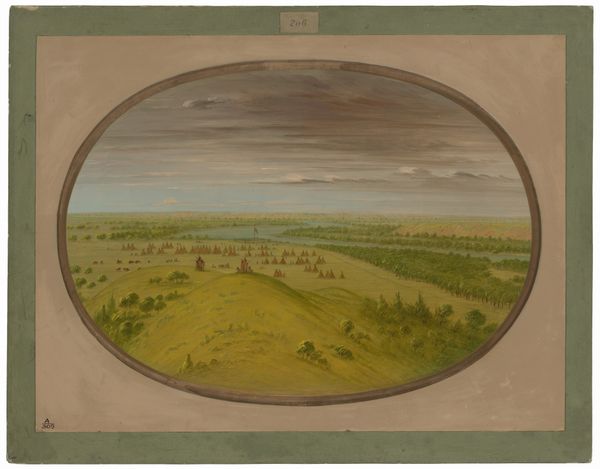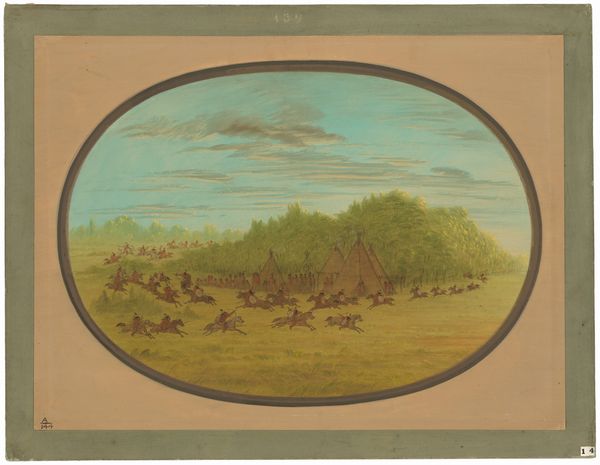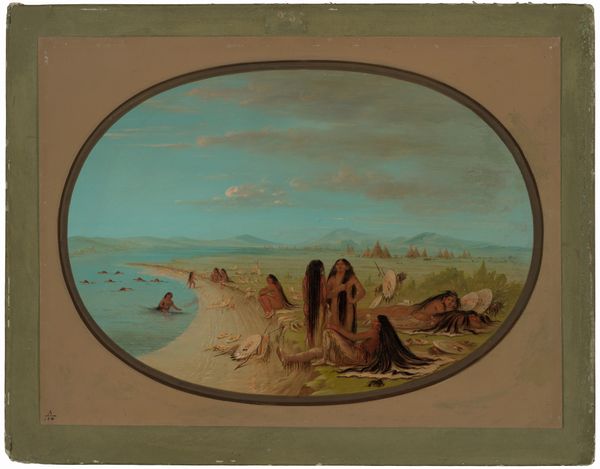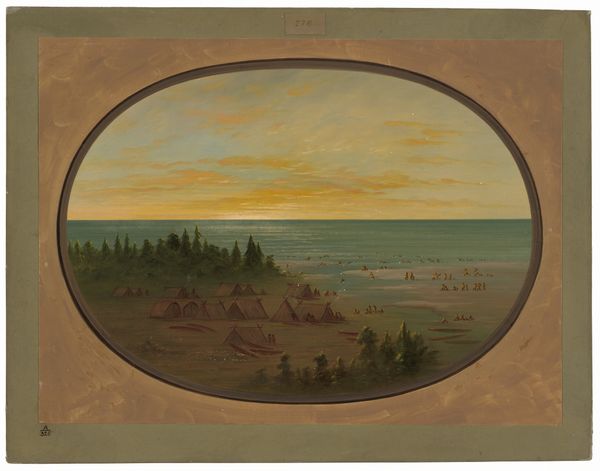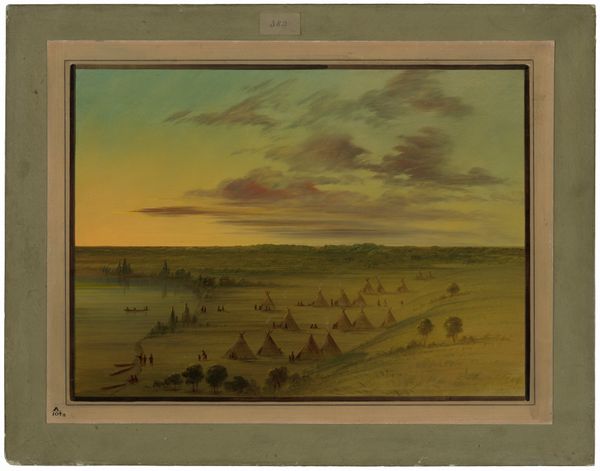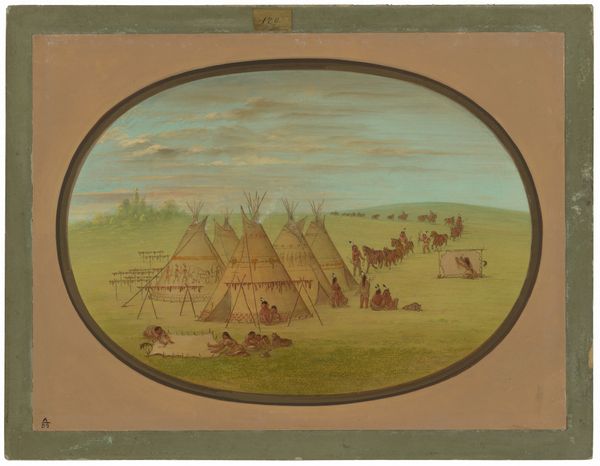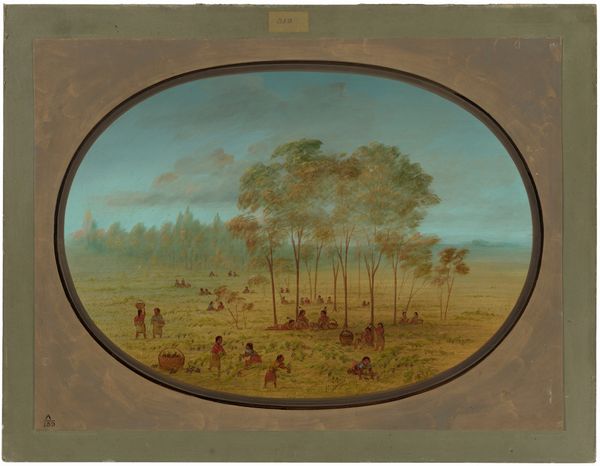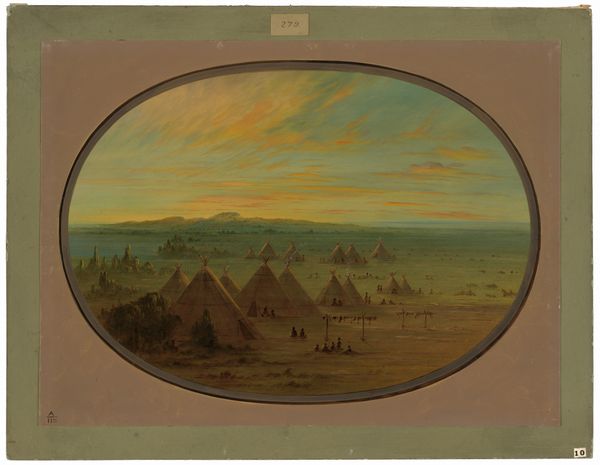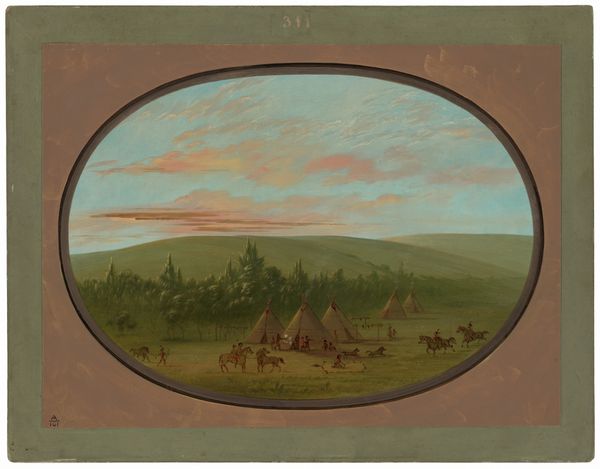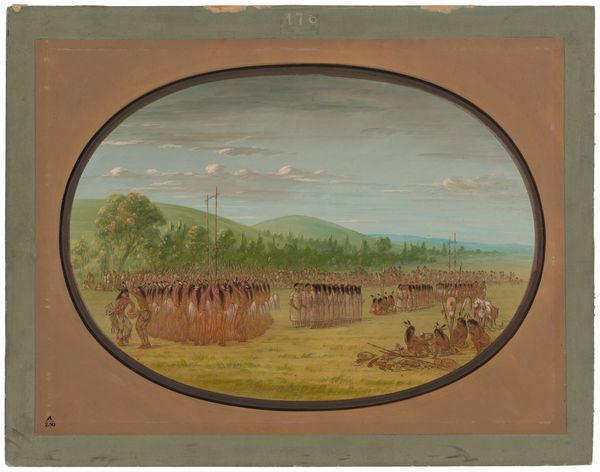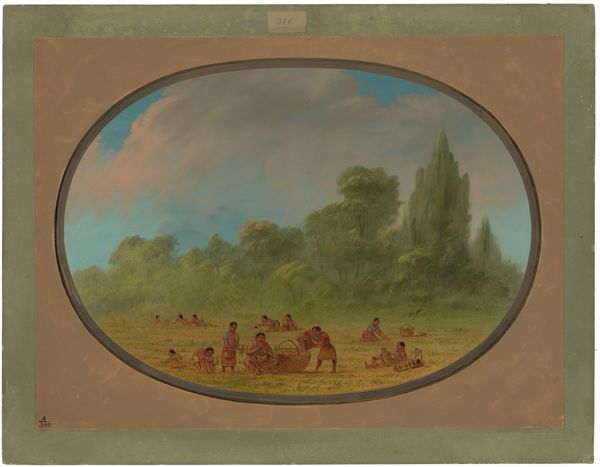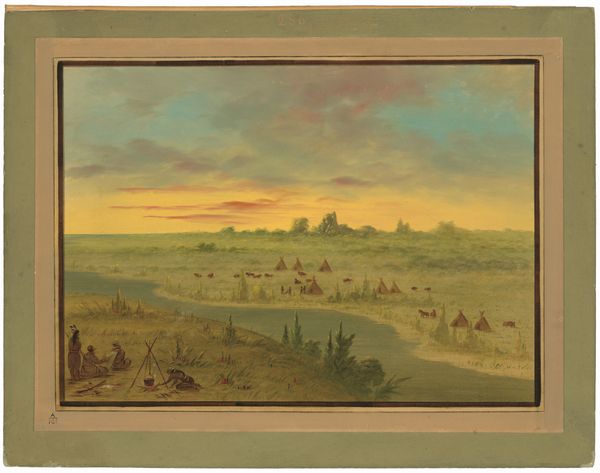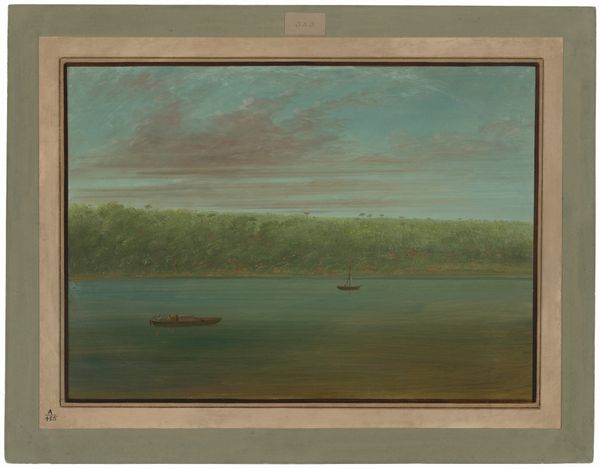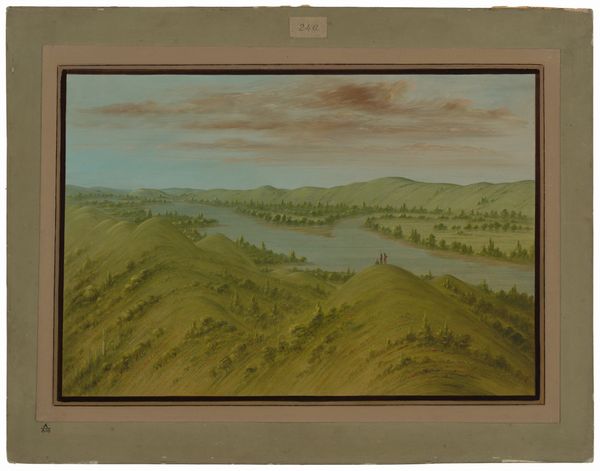
painting
#
water colours
#
painting
#
landscape
#
oil painting
#
watercolor
Dimensions: overall: 47 x 63.5 cm (18 1/2 x 25 in.)
Copyright: National Gallery of Art: CC0 1.0
Curator: At first glance, it feels remarkably…serene. Almost idyllic, in its way. Editor: It is a placid scene. Today we're examining George Catlin's "Mandan Village - A Distant View," likely created between 1861 and 1869. Note the medium; Catlin uses watercolor, bringing a delicate quality to this representation of the Mandan people. Curator: The very technique contributes to the air of tranquility, doesn’t it? The watery strokes, the almost pastel shades...it seems intentionally distanced from harsher realities. Do you think it accurately portrays daily life? Editor: That's debatable. While visually appealing, Catlin often romanticized indigenous life, filtering it through his own perspective. He wasn't a neutral observer; his art served particular social and political ends. He actively circulated images to preserve them within the mainstream. Consider also the title - a 'distant view' suggests the limited interaction that Catlin had to the villages and their populations, which in turn reflects how much of his painting of the villages would be interpreted. Curator: I see what you mean. It’s crucial to remember his presence inevitably altered the very subject he was trying to document. But it is worth acknowledging that he traveled extensively in the American West, producing a significant record of indigenous culture during a period of intense change, so some accuracy should also be taken into account? Editor: Agreed, his access and detailed record is undeniably valuable, but let's think about the materials he used: watercolor and paper, industrially produced items from a growing economy deeply implicated in westward expansion and resource extraction. These objects and their materials tell the history of trade, material networks, colonialism, and resource extraction. And we see here a narrative, that while seemingly innocent, played into broader societal currents. His depictions served both to preserve a culture and indirectly to justify its displacement. Curator: That provides a useful counterpoint to an admittedly simplistic interpretation. Viewing the art then makes us think about how the production, reception, and context intertwine, giving a much better holistic analysis of both its creation and our perception. Editor: Precisely! Examining the interplay of medium, subject, and social history allows for a more thoughtful encounter with artworks like Catlin's.
Comments
No comments
Be the first to comment and join the conversation on the ultimate creative platform.
